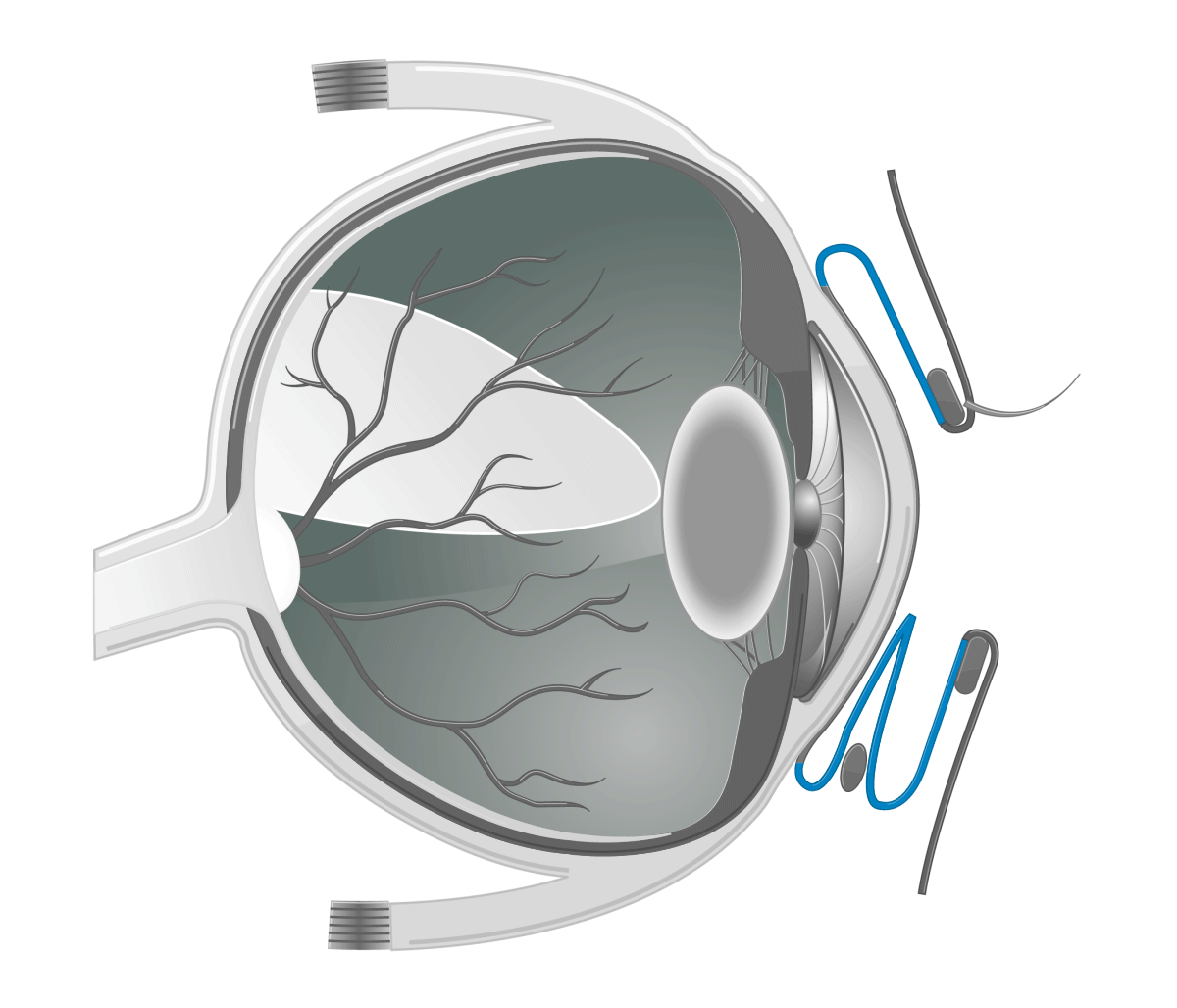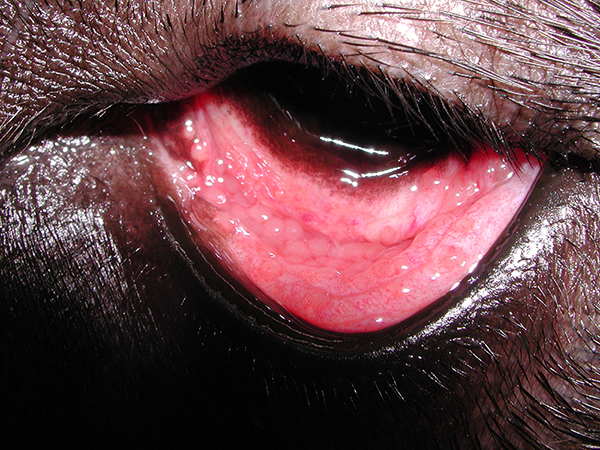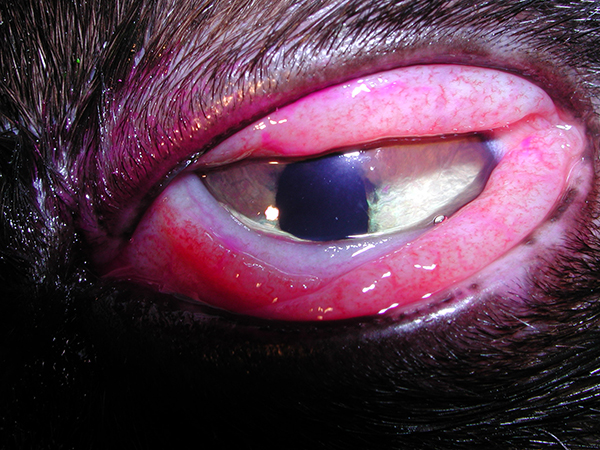
Conjunctiva

The conjunctiva is the term given to the thin, mobile, mucous membrane which lines the inner surface of the upper and lower lids, the inner and outer surfaces of the third eyelid and the anterior portion of the globe (next to the limbus).
The conjunctiva consists primarily of stroma, which is split into a deeper fibrous layer (mainly connective tissue, blood vessels and nerves) and a more superficial adenoid layer, which contains conjunctiva-associated lymphoid tissue. Above this sits the conjunctival epithelium, which contains goblet cells and this layer is coated by the pre-ocular tear film, which provides protection and nutrition.
The conjunctiva is a highly exposed mucous membrane, and is highly responsive to noxious stimuli due to its rich vascular supply and lymphoid content. Conjunctivitis is a common differential diagnosis in the case of ‘the red eye’ and the common signs of conjunctival inflammation include oedema (chemosis), hyperaemia and presence of a discharge.


